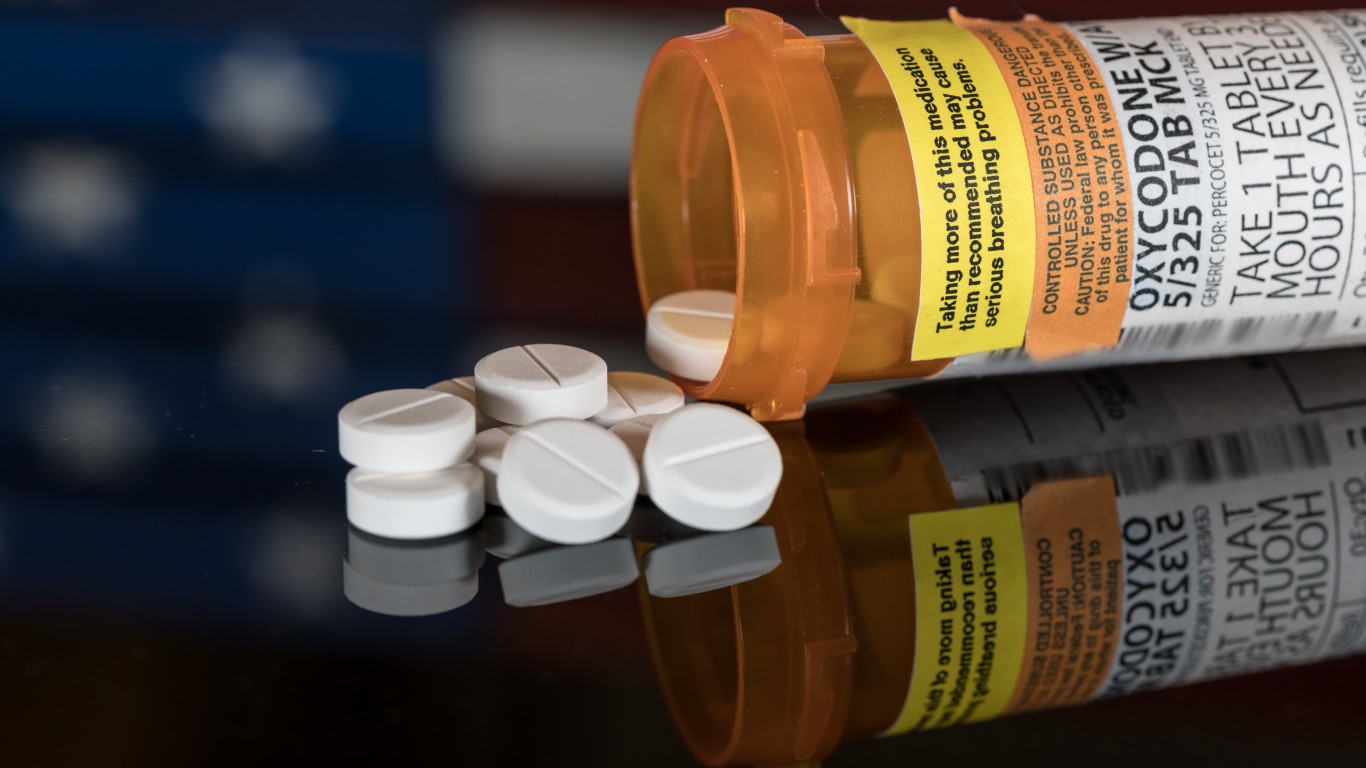Health and Healthcare
Opioid Crisis Has Cost US Economy $631 Billion

Published:
Last Updated:

In the four-year period between 2015 and 2018, opioid abuse cost the U.S. economy at least $631 billion. The human cost between 1999 and 2017 totaled nearly 400,000 lives lost.
About 29% of the total cost ($186 billion) was borne by federal, state and local governments, with the remainder borne by the private sector and individuals.
The Society of Actuaries reported the data Wednesday in a new report, Economic Impact of Non-Medical Opioid Use in the United States.
While the worst may be behind us, the human cost is expected to continue mounting: “Opioid overdose deaths are now the single largest factor slowing the growth in U.S. life expectancy and have led to stagnation or decreases in life expectancy three years in a row for the first time since 1915–1918, when the country was facing World War I and the Spanish flu pandemic. By some estimates, the United States may be on track to see an additional 500,000 opioid overdose deaths over the next decade.”
The report estimates that the total economic cost will also rise by around $188 billion in 2019. The epidemic’s costs are divided into five categories: health care, premature mortality, criminal justice costs, child and family assistance and education programs, and lost productivity.
The largest share of the economic costs (40%, or $253 billion) is reported in the premature mortality category. The total is driven by lost lifetime earnings for Americans who died prematurely as a result of opioid overdoses.
Nearly a third ($205 billion) represents excess health care spending for individuals with opioid use disorder (OUD), infants born with neonatal abstinence syndrome or neonatal opioid withdrawal syndrome, and other family members of those with diagnosed OUD.
Lost productivity accounted for 15% of the total costs ($96 billion). These costs are associated with absenteeism, reduced labor force participation, incarceration for opioid-related offenses and employer costs for disability and workers’ compensation benefits.
Criminal justice system costs and child and family assistance and education program costs each accounted for about 6% of the total lost ($39 billion each).
The New York Times reported Thursday that three drug distributors (AmerisourceBergen, Cardinal Health and McKesson) and two drugmakers (Teva Pharmaceutical and Johnson & Johnson) have reached an agreement to resolve thousands of opioid-related cases for $50 billion in cash and treatment programs. Pharmacies, including CVS, Walgreens and Walmart, also have been sued for their role in the opioid epidemic.
That settlement, if it is agreed to, comes ahead of a trial in federal court scheduled to begin Monday in Cleveland that aggregates thousands of lawsuits against drugmakers, distributors and pharmacies into a “negotiation class” that has the authority to negotiate a settlement deal on behalf of every city and county in the United States, unless the city or county chooses to go its own way.
Johnson & Johnson on Wednesday offered to pay $4 billion to settle claims against the company for its part in the opioid epidemic. Teva has offered to donate more than $15 billion in generic drugs, including those used to combat OUD, to resolve all claims against it.
In August, an Oklahoma judge ordered Johnson & Johnson to pay the state $572 million for deceptive marketing of the company’s opioid products. He later reduced the amount to $402 million, saying that he had made a calculation error. The plaintiffs had been seeking $17.5 billion in damages.
Purdue Pharma and its controlling Sackler family have offered a settlement they value at around $13 billion for the company’s role in the opioid crisis. That offer is among the items that will be cleared in Purdue’s Chapter 11 bankruptcy proceeding. Some states, including New York, Massachusetts and New Jersey, have not agreed to the proposed settlement.
Based on the Society of Actuaries’ estimate for just the most recent four years, drugmakers and distributors could be getting off cheap with a settlement of around $50 billion against an estimated cost to federal, state and local governments of $186 billion. Especially considering the actuarial estimate of $188 billion in total additional costs for 2019, of which 29%, or $54.5 billion, will hit federal, state and local government budgets.
Regarding costs beyond 2019, the report notes: “The extent to which future costs will rise or fall will be dependent on our ability to reduce the incidence of OUD and to support those currently living with OUD working toward recovery.”
Another 500,000 Americans may die from opioid overdoses over the next decade and future economic costs could skyrocket. Paying those future costs should largely be borne by those drug companies, distribution companies, pharmacies and others who profited from the opioid epidemic. It doesn’t begin to be fair to the families who suffered and lost, but it does bend the arc toward justice.
See which counties have the worst drug problems in each state and the full list of the 25 most dangerous drugs.
Thank you for reading! Have some feedback for us?
Contact the 24/7 Wall St. editorial team.